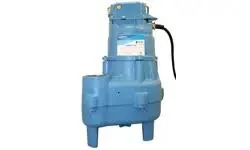English
- Afrikaans
- Albanian
- Amharic
- Arabic
- Armenian
- Azerbaijani
- Basque
- Belarusian
- Bengali
- Bosnian
- Bulgarian
- Catalan
- Cebuano
- Corsican
- Croatian
- Czech
- Danish
- Dutch
- English
- Esperanto
- Estonian
- Finnish
- French
- Frisian
- Galician
- Georgian
- German
- Greek
- Gujarati
- Haitian Creole
- hausa
- hawaiian
- Hebrew
- Hindi
- Miao
- Hungarian
- Icelandic
- igbo
- Indonesian
- irish
- Italian
- Japanese
- Javanese
- Kannada
- kazakh
- Khmer
- Rwandese
- Korean
- Kurdish
- Kyrgyz
- Lao
- Latin
- Latvian
- Lithuanian
- Luxembourgish
- Macedonian
- Malgashi
- Malay
- Malayalam
- Maltese
- Maori
- Marathi
- Mongolian
- Myanmar
- Nepali
- Norwegian
- Norwegian
- Occitan
- Pashto
- Persian
- Polish
- Portuguese
- Punjabi
- Romanian
- Russian
- Samoan
- Scottish Gaelic
- Serbian
- Sesotho
- Shona
- Sindhi
- Sinhala
- Slovak
- Slovenian
- Somali
- Spanish
- Sundanese
- Swahili
- Swedish
- Tagalog
- Tajik
- Tamil
- Tatar
- Telugu
- Thai
- Turkish
- Turkmen
- Ukrainian
- Urdu
- Uighur
- Uzbek
- Vietnamese
- Welsh
- Bantu
- Yiddish
- Yoruba
- Zulu
Telephone: +86 13120555503
Email: frank@cypump.com
Oct . 21, 2024 12:16 Back to list
Innovative Methods for Effectively Transporting Heavy Concrete Slurry in Construction Projects
Efficient Solutions for Transporting Heavy Concrete Slurry
Transporting heavy concrete slurry presents a unique set of challenges in the construction industry. Concrete slurry, a mixture of water, cement, and aggregates, is crucial for various applications, including foundations, road construction, and the creation of precast elements. However, the viscous nature of this mixture requires innovative approaches to ensure efficient and effective transportation.
The Importance of Efficient Transport
Efficient transport of concrete slurry directly impacts project timelines and costs. Delays in the delivery of concrete can lead to increased labor costs and project overruns. Furthermore, mishandling during transport can degrade the quality of the mix. Therefore, exploring innovative transport methods is essential for enhancing productivity and ensuring the integrity of the materials used in construction.
Modern Transportation Methods
1. Pumping Systems One of the most effective methods for transporting heavy concrete slurry is through advanced pumping systems. High-pressure pumps can move the slurry through hoses over considerable distances, making them ideal for large construction sites. This method minimizes the need for manual labor and reduces the risk of spillage and wastage. Modern pumping systems are equipped with variable speed controls, allowing operators to adjust the flow rate based on project requirements.
2. Concrete Agitator Trucks These specialized vehicles are designed to transport mixed concrete while keeping it agitated to prevent premature setting. Agitator trucks can maneuver around construction sites with ease, delivering concrete slurry directly to where it's needed. Additionally, some trucks are equipped with advanced GPS systems that optimize delivery routes, ensuring timely arrival and reducing fuel consumption.
'efficient solutions for transporting heavy concrete slurry ...'

3. Flexible Bladder Systems For projects requiring extremely mobile solutions, flexible bladder systems present an excellent alternative. These systems consist of large, collapsible bladders that can be filled with concrete slurry and transported to remote locations. Once at the site, the bladder can be punctured to deliver the slurry where required. This method not only reduces the weight carried by transport vehicles but also minimizes the environmental impact, as fewer vehicles are needed.
4. Rail and Conveyor Systems In larger industrial projects, rail or conveyor systems can be utilized for transporting heavy concrete slurry. These systems are particularly useful for sites where fixed routes can be established. Conveyor belts can move slurry over short distances with minimal labor intervention, while rail systems can transport large quantities over longer distances efficiently.
Addressing Environmental Concerns
Efficient transport solutions must also consider environmental impacts. Traditional methods of concrete transport can contribute to dust, waste, and greenhouse gas emissions. Innovative solutions, such as using electric or hybrid vehicles for transport, can help minimize these effects. Moreover, implementing recycling practices on-site can reduce waste, making the transport of concrete slurry even more sustainable.
Conclusion
In conclusion, transporting heavy concrete slurry is a vital aspect of the construction process that requires careful planning and execution. By exploring modern transportation methods, such as pumping systems, agitator trucks, flexible bladders, and conveyor systems, construction companies can enhance efficiency, reduce costs, and maintain the quality of their concrete products. Additionally, addressing environmental concerns through sustainable practices ensures that the construction industry moves towards a more responsible future. As technology advances, it is essential for professionals in the industry to stay informed and adopt innovative solutions that meet the evolving demands of modern construction.
-
ISG Series Vertical Pipeline Pump|High Efficiency&Low Noise
NewsJul.29,2025
-
ISG Series Vertical Pipeline Pump - Chi Yuan Pumps Co., LTD.|High Efficiency, Energy Conservation, Low Noise
NewsJul.29,2025
-
ISG Series Vertical Pipeline Pump-Chi Yuan Pumps Co., LTD.|High Efficiency&Energy-Saving
NewsJul.29,2025
-
ISG Series Vertical Pipeline Pump - Chi Yuan Pumps Co., LTD. | High Efficiency, Energy-Saving
NewsJul.29,2025
-
ISG Series Pipeline Pump - Chi Yuan Pumps | High Efficiency, Low Noise
NewsJul.29,2025
-
High-Efficiency Vertical Slurry Pumps for Mining & Industry Solutions
NewsJul.29,2025










